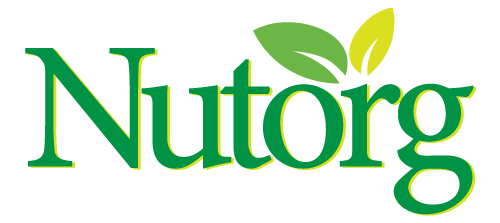How to Leverage LinkedIn for B2B Marketing
LinkedIn has transformed into a major platform for B2B marketing, offering unparalleled access to industry leaders, decision-makers, and high-value prospects. With its vast user base, it’s no longer just a networking hub — it’s a strategic arena where businesses can demonstrate expertise, build authority, and generate targeted leads. To maximize LinkedIn’s potential, you need a clear plan that combines brand positioning, quality content, and intelligent SEO integration.
1. Enhance Your LinkedIn Profile for Visibility
Your profile or company page is often your first impression. It should communicate what you do and why it matters. Integrate keywords from your Search Engine Positioning strategy into your headline, summary, and experience sections. This boosts your discoverability both within LinkedIn search and on Google.
2. Consistently Post Engaging, Relevant Content
Regular posting keeps you visible and credible. Share case studies, expert tips, and industry news that address your target market’s needs. To stand out, repurpose visually appealing assets from your Pinterest SEO campaigns — eye-catching designs can increase engagement even on LinkedIn.
If you use video, make sure it’s optimized for a Video Search Engine like YouTube before sharing on LinkedIn. A well-optimized video can rank in search results, bring in external traffic, and increase watch time on your posts.
3. Publish Long-Form LinkedIn Articles
Native articles on LinkedIn not only position you as a thought leader but also appear in search engines, aiding your Search Engine Positioning
efforts. Incorporate targeted terms from your SEO Proposal and link strategically to your main website or relevant resources.
4. Participate in Niche LinkedIn Groups
Groups allow you to join topic-specific conversations, connect with like-minded professionals, and subtly showcase your expertise. Avoid hard selling — focus on offering useful insights that establish trust and credibility.
5. Run LinkedIn Ads for Precision Targeting
LinkedIn’s advertising tools let you filter your audience by job role, industry, or company size. This precise targeting is perfect for B2B campaigns. An SEO Proposal can guide your ad messaging by pinpointing the keywords and phrases most likely to resonate with your audience.
6. Share Success Stories and Proof of Results
In B2B marketing, credibility is essential. Share measurable outcomes from past projects, client testimonials, and before-and-after scenarios. If you’ve achieved results through Pinterest SEO or ranked high in a Video Search Engine, highlight these wins as proof of expertise.
7. Harness Video for Stronger Engagement
Videos perform exceptionally well on LinkedIn’s feed. Whether it’s a quick tip, a behind-the-scenes clip, or a client interview, ensure the content is optimized for a Video Search Engine to maximize exposure beyond LinkedIn. Add captions, a compelling thumbnail, and a clear CTA.
8. Link Content to Targeted Landing Pages
When you share content that directs people to your website, make sure they land on a page optimized for both conversions and Search Engine Optimization. Use your SEO Proposal as a guide for selecting keywords, headlines, and CTAs that align with audience intent.
9. Performance and Adjustment Strategies
LinkedIn’s analytics tools give insights into who’s viewing and interacting with your content. Study engagement trends and feed these insights back into your SEO Proposal for ongoing improvement.
10. Promote Across Platforms
Don’t let your LinkedIn activity operate in isolation. Repurpose Pinterest SEO visuals for LinkedIn carousels, share LinkedIn clips in Video Search Engine-friendly formats, and use search-optimized blog content as material for posts. This multiplies your reach without creating everything from scratch.
11. Build Direct Connections with Key Prospects
Use LinkedIn’s advanced search to find and connect with high-value contacts. Personalize every message by referencing their business challenges, recent content, or shared connections. Avoid generic “let’s connect” notes.
12. Keep a Consistent Brand Identity
Your branding should be consistent across all LinkedIn activities — from profile banners to post formatting and tone of voice. When sharing materials sourced from Pinterest SEO or videos optimized for a Video Search Engine, ensure they follow your brand style guidelines.
Example of a Coordinated Approach
Let’s say a B2B cybersecurity firm wants to reach IT directors. Their SEO Proposal highlights “enterprise cybersecurity solutions” as a primary keyword.
They craft LinkedIn articles around these terms to enhance search engine positioning.
Tutorial videos are optimized for a Video Search Engine and then posted to LinkedIn with strong CTAs.
Infographics from Pinterest SEO campaigns are repurposed into professional slides for carousel posts.
LinkedIn ads target IT leaders, directing them to a conversion-optimized landing page.
Over time, the brand’s presence grows, and the inbound leads from LinkedIn become more consistent and higher in quality.
Final Thoughts
LinkedIn has become one of the most effective tools for B2B lead generation — but only if you use it strategically. By merging creative content with data-driven methods like Pinterest SEO, Video Search Engine optimization, Search Engine Positioning, and a solid SEO Proposal, you can extend your reach, attract the right audience, and convert connections into paying clients.
With consistent effort, LinkedIn can transform from a simple networking platform into a core driver of your B2B marketing success.
